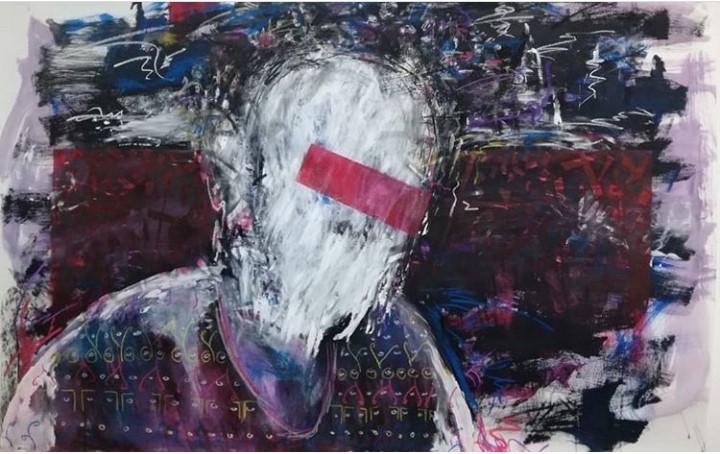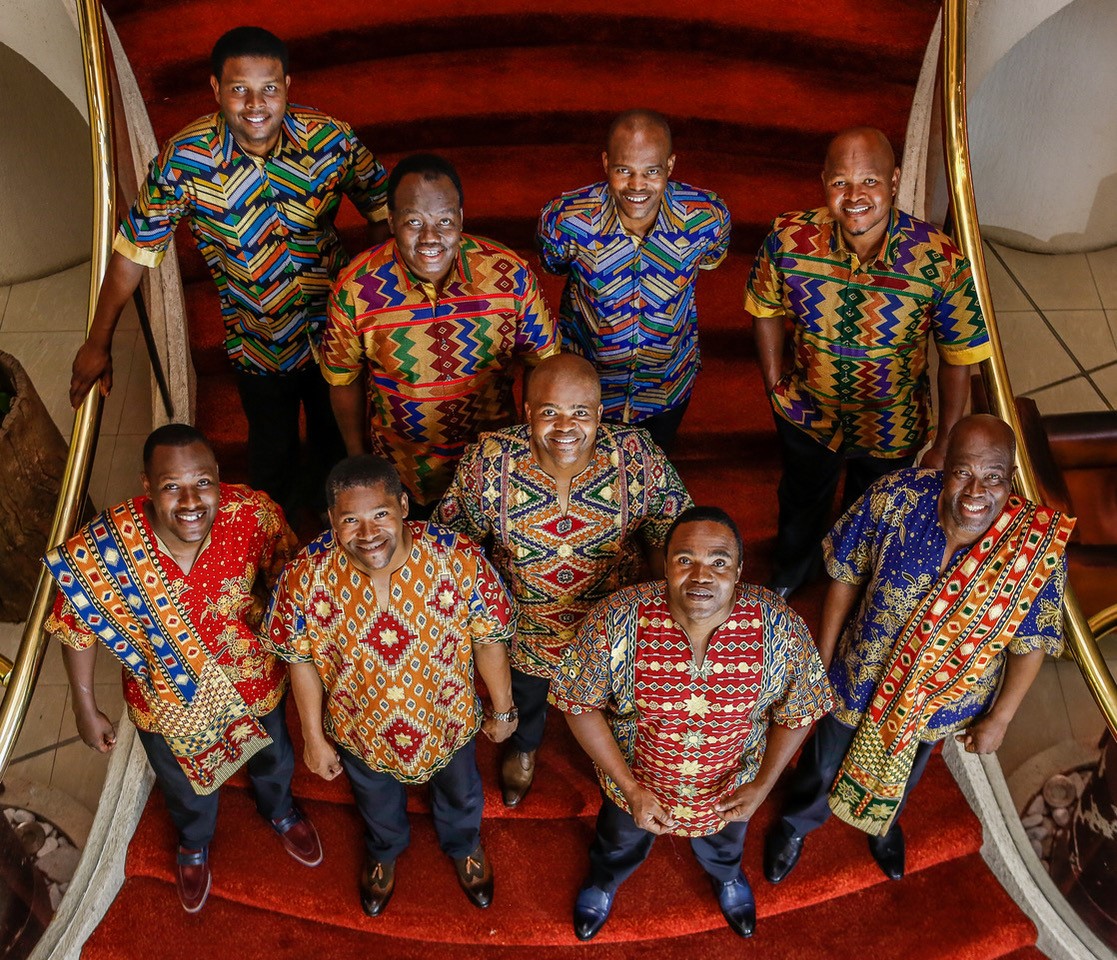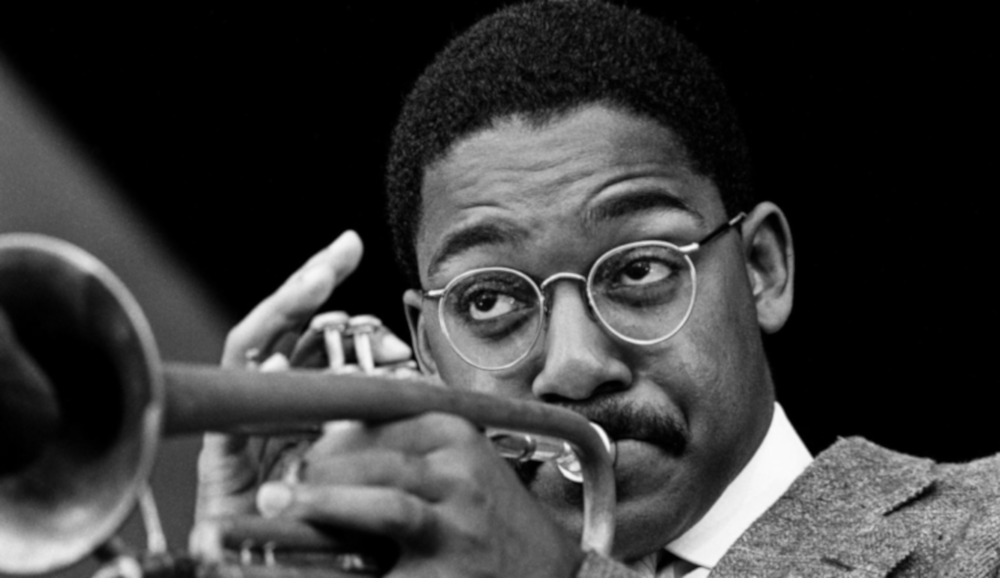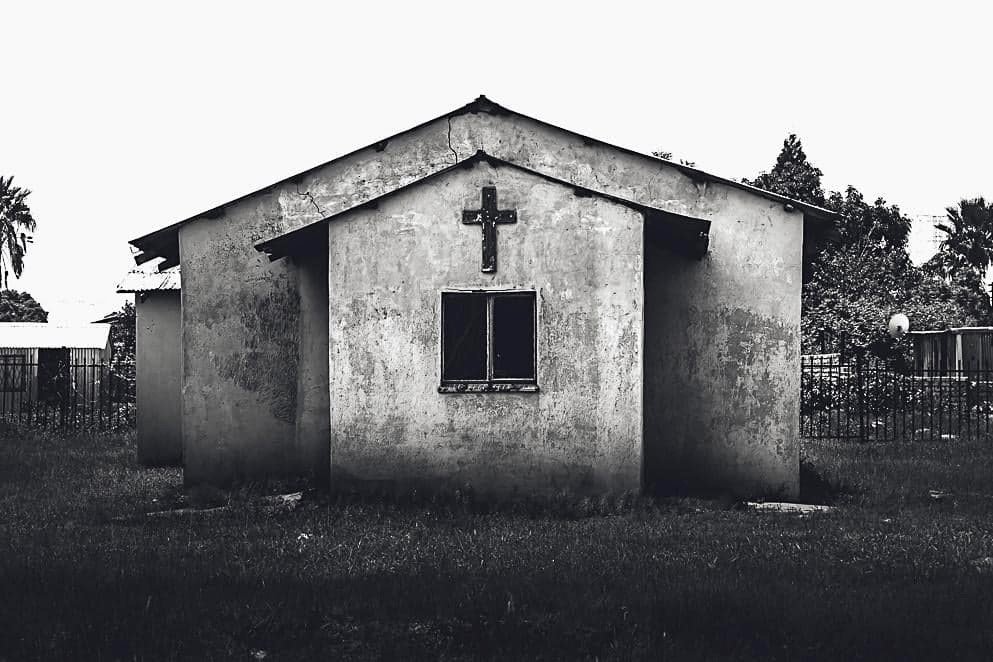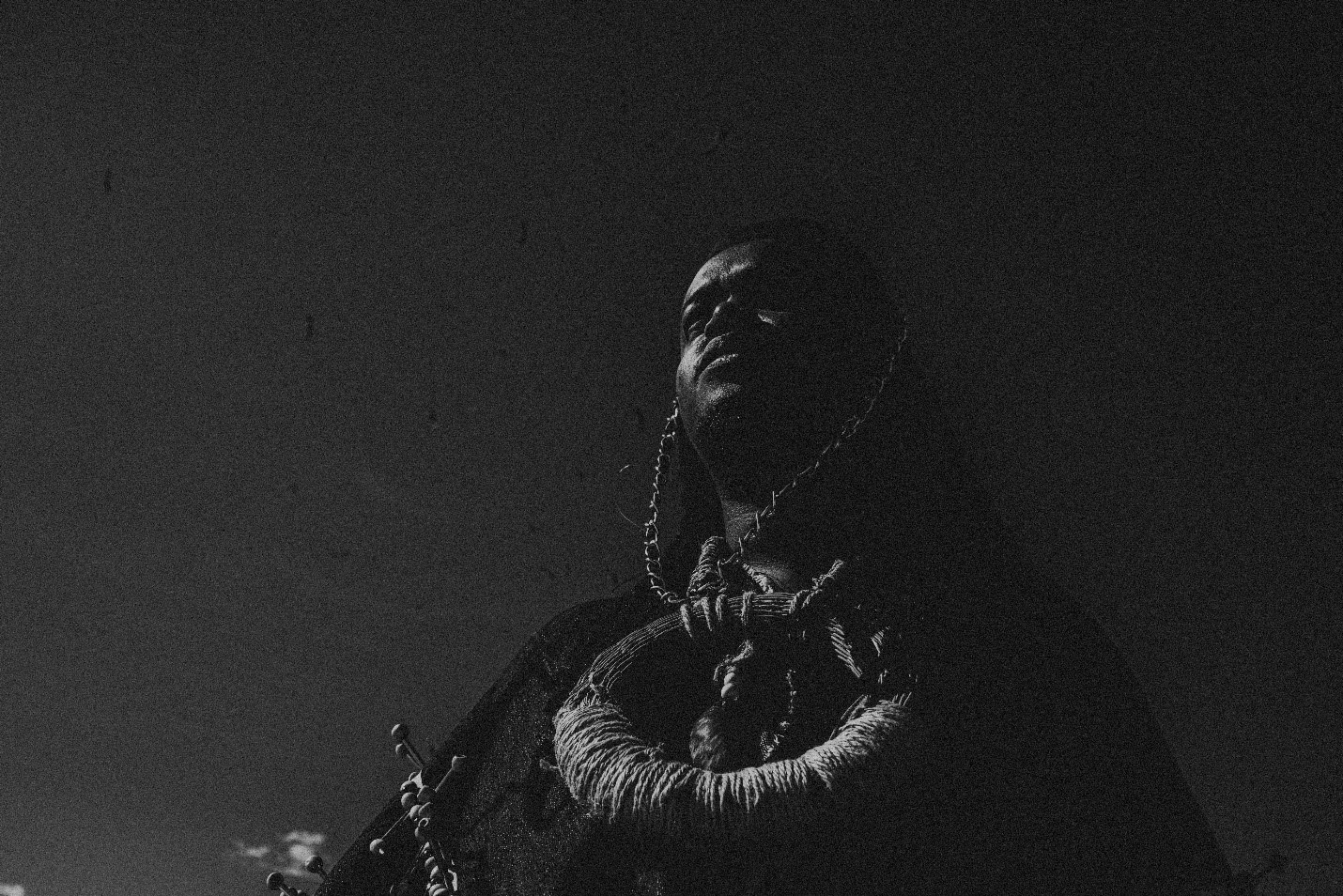…”Human beings deliberately trick themselves by their own devices which are stuck in their brains that they limit themselves in a prison of what they think they know”
So profound a statement to open with in describing an artist of Khulekani Cele’s calibre. Shot of no subversion of perceptions, Cele distinctly explains that his is a fascination of abstractions of the ordinary. In his piece, Khulumang’lalele a symphony of meandering perceptual collage, he challenges your cortex to seek meaning in perceptual consciousness as one easily gets lost in the deep stares of fiery meadow figures that compete for your attention.
The deliberate use of “humble earthy” colours draws you into a session of hypnosis that lulls your senses and demands of your attention that is immerse. From this, you can’t help but proclaim Khulumang’lalele. Ng’lalele to the feisty yellow colour that tries to dominate the entire frame, the gashing strokes of red and the ever humble child of the soil encompassing the piece.
The message has been received. It is a message of sheer ambiguities that require something outside of the work to detail. Hence this rigmarole of synergising meaning from the vast body of Cele’s work becomes an important yet almost impossible task.
I proclaim that this task ought to be driven by something of connotative qualities, at least that much is something we should agree on. Hence one can’t help to stop and wonder that the ferocity of this interplay of these perceptual effigies could possibly be the trickery of my own device. So great is this possibility that one need not ponder much but take heed of the artist’s call that really what to make of this is all dependent on the stretch of your imagination.

Keeping up with the theme of ubiquity of Cele’s work, his expressions are not limited to the world of texture, colour, line, shape and space. He consciously affirms that his “body of work deals with themes of perception, the politics in identity and the transculturation of a Black man in contemporary South Africa. A very expressive chap we have here, but we of course want to believe that the usage of the word “man” in this context is quite the archaic one because pieces like Dj Happygal, Sir Muholi and Sithelo for example would be homes in the wilderness.
Sir Muholi, 105 x 7.5 cm, Cardboard, 2019. Dj Happygal, 105 x 7.5 cm, Cardboard, 2019.

Sithelo, 105 x 7.5 cm, Cardboard, 2019.
Sticking with his description of his work, I can’t help but question if I suffer the limitation of my own prison or Due to Pandemic is not very conformable to the assertion. Maybe I must check myself.

Due To Pandemic
However, this is a common challenge you face when you try and pinpoint some form of theme or message in Cele’s work, it just doesn’t come together. For example when you check his Behance portfolio “Digital Art Festival” there is no consistency in either theme nor style. The works make for a much compelling argument as stand alones. His instagram account, also suffers the same fate.
Now you at least hope that his themed work “responding to covid” which is a body of work that was inspired by Cele’s experience in the art residency in Germany during the initial stages of Covid-19, will at least bring much synergy. This is not the case, from a Sobukwe Clause to a Dr Mutwa, Untitled to Bayaphangalala, the only suited piece in this compilation is Due to Pandemic. Outside of this piece, I watch and wonder what is the narrative told by these works.

And by this I am in no way taking away the brilliance of each piece, the mastery of technique and concept but we just have to admit that they just don't play well as teammates.

So, in trying to follow this work you will realise that it moves from the realm of the dark mystic of Ntsika Dulwana, to multimedia of Slovo Mamphaga, to abstractions of Julie Mehretu to worlds on end of collage and politics. Where is Cele in all of this? I am missing his unique voice and contribution.
From this I can only conclude that, he deals with subversion of perception. I mean, I stand challenged to fill words on this page as one would quickly find out when journing with Khulekani in his work. The work in totality abstracts or obstructs any sense of pattern or commonality. You get lost in the various techniques and hope that commonality of purpose will assist. I have bad news for you, here we are still searching for our own unique voice. There is no unifying factor in style, theme, or otherwise. There is nothing incipient that distinctly says that this is Khulekani’s work.

So, in my failed attempt to assist you to understand this work, I present Khulekani Cele to you to make of his work what you decide based on the limitation of what you know.

